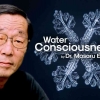In the realm of criminal investigations, advancements in forensic technology have become a powerful tool in unraveling mysteries that were once thought unsolvable. One such case that has captivated the public's attention is the Stephanie Isaacson case, where the application of DNA evidence has played a pivotal role in uncovering the truth behind a perplexing crime. This article delves into the intricacies of the investigation, highlighting the significance of DNA evidence in solving the enigma surrounding Stephanie Isaacson's case.
The fascination with true crime has taken the world by storm, captivating audiences with the intricate details of real-life mysteries. Among these, the Stephanie Isaacson case has emerged as a compelling narrative, drawing attention not only for its mysterious nature but also for the groundbreaking role played by DNA evidence in its resolution. The decision to explore this topic stems from the inherent human curiosity surrounding crime, coupled with the increasingly pivotal role that forensic technology, particularly DNA analysis, plays in modern criminal investigations.
In an era where the boundaries of forensic science are continually pushed, the Stephanie Isaacson case stands out as a prime example of the intersection between technology and justice. The allure of this particular case lies in its ability to showcase the transformative impact of DNA evidence on solving complex criminal puzzles, offering a real-world illustration of how science can bring clarity to the darkest of mysteries. As we delve into the details of this case, we unravel not only the enigma surrounding Stephanie Isaacson's disappearance but also the broader implications of utilizing cutting-edge forensic techniques in the pursuit of truth.
The allure of true crime narratives often lies in the perplexing nature of the cases themselves. The Stephanie Isaacson case, with its web of unanswered questions, became a focal point of public intrigue. The decision to delve into this particular mystery is fueled by the universal fascination with understanding the motives behind crimes and the relentless pursuit of justice.
What makes the Stephanie Isaacson case even more compelling is the integral role that DNA evidence played in unraveling its complexities. In an age where scientific advancements are redefining the possibilities within criminal investigations, this case serves as a compelling illustration of how technology can be a formidable ally in the fight against crime. The evolution of forensic techniques, particularly in DNA analysis, has not only revolutionized investigations but has also given hope to victims' families who have long sought closure.
As we embark on this exploration, we aim to shed light on not only the specifics of the Stephanie Isaacson case but also the broader implications it carries for the future of criminal justice. The convergence of gripping narratives and cutting-edge forensic science has the power to not only captivate our curiosity but also to showcase the instrumental role that technology can play in untangling even the most intricate criminal mysteries. The Stephanie Isaacson case serves as a beacon, drawing us into the complex world of forensic investigation where science meets storytelling, unraveling enigmas that once seemed inscrutable.
The intrigue of true crime stories lies not only in the unraveling of mysteries but also in the profound impact of the investigative methods employed. The Stephanie Isaacson case, a riveting narrative that captivated public curiosity, becomes a focal point for exploration not just due to its enigmatic nature but for the transformative role played by DNA evidence. The decision to delve into this case is spurred not only by the universal fascination with crime narratives but also by the critical juncture at which forensic science and technology intersect.
As we embark on this journey into the heart of the Stephanie Isaacson case, the exploration is not confined solely to the unraveling of a single mystery; it extends to the broader implications that DNA evidence brings to the forefront of modern criminal investigations. In an era where the boundaries between science and justice continue to blur, this case stands as a microcosm of the intricate dance between the quest for truth and the technological advancements that propel it forward.
Beyond the immediate intrigue of a compelling crime narrative, the Stephanie Isaacson case serves as a portal into the evolving landscape of forensic science, ethics, and societal considerations. By examining the nuances of this case, we aim to shed light not only on the intricacies of solving a particular mystery but also on the ethical dilemmas, global ramifications, public perceptions, legal frameworks, and the pivotal role of education in fostering a deeper understanding of the scientific methodologies employed.
In essence, the Stephanie Isaacson case becomes a canvas on which the intricate tapestry of forensic science and its broader impact on society is painted. It invites us to delve into the complexities of justice-seeking in the 21st century, where science becomes both a tool and a subject of scrutiny in the pursuit of truth.
Stephanie Isaacson, a young professional, went missing under mysterious circumstances that baffled investigators for months. The lack of substantial leads and the absence of eyewitness accounts posed a significant challenge in bringing clarity to the case. In recent years, advancements in DNA analysis have revolutionized criminal investigations. DNA evidence, once considered the gold standard in forensic science, has the potential to link suspects to crime scenes, victims, or even unidentified remains. In the Stephanie Isaacson case, the application of DNA technology became a turning point in the investigation.











